I didn’t pay much attention, at first, to the stray ant on my kitchen counter. It must have come in through an open window. Soon I noticed several more, and worrisome trails leading to cupboards. When I opened the microwave oven and found it full of ants feasting on breakfast crumbs, I knew it was time to take action.
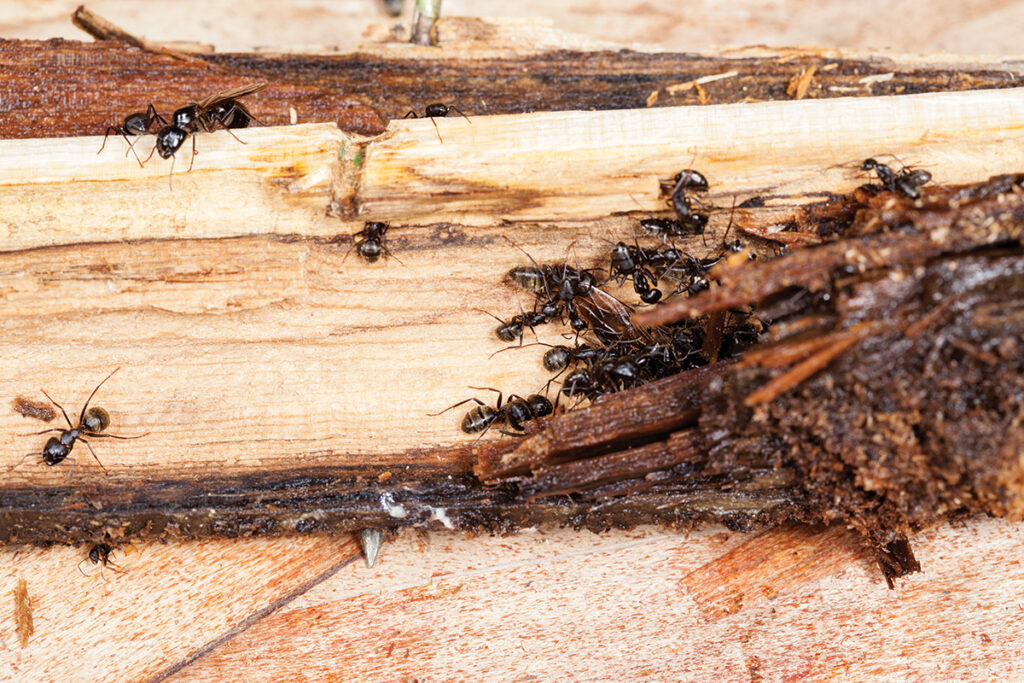
What Type of Ants Do you Have?
Ants are everywhere: they’ve been around since the Cretaceous Period, 130 million years ago, and it is estimated there are over 10,000 kinds of ants on the planet, with over 700 types in the U.S. alone. Pavement ants are the most common (those tiny, dark brown or black ants that nest beneath cracks in the cement). Others, too, are common pests: fire ants, sugar ants, odiferous ants, and (old-house shudder) carpenter ants.

Carpenter Ants
Appearance:
Black/dark brown
1/4″ – 1/2″
Yellow hairs on abdomen
Food Source:
Other insects (dead or alive), honeydew, sugar, food grease
Habitat:
Decaying moist wood, trees and structures
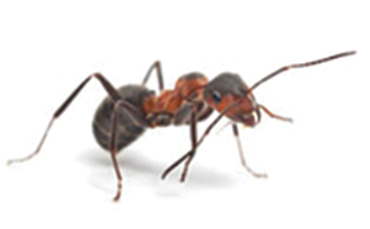
Field Ants
Appearance:
Black and red
1/8″ – 1/4″
Rounded front and backside
Food Sources:
Honeydew, dead insects, sweets, spilled liquids
Habitat:
Fields, yards, along fences, near trees and building
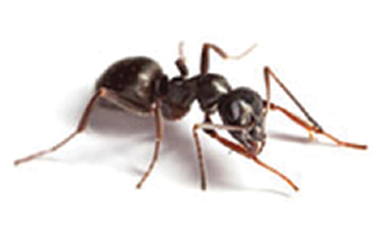
Pavement Ants
Appearance:
Dark red/brown or black
1/8″
Long, raised arms
Food Source:
Fruit, honeydew, seeds, insects, meats, bread, cheese
Habitat:
Sidewalks, patios, driveways–areas with little vegetation
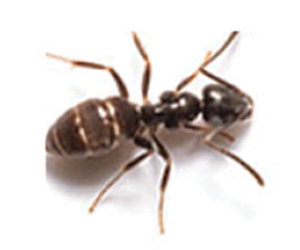
Odorous House Ants
Appearance:
Black/dark brown
1/8″ – 1/16″
Smells when crushed
Food Source:
Sugary foods, honey, food grease, spills
Habitat:
Wall voids near heat source
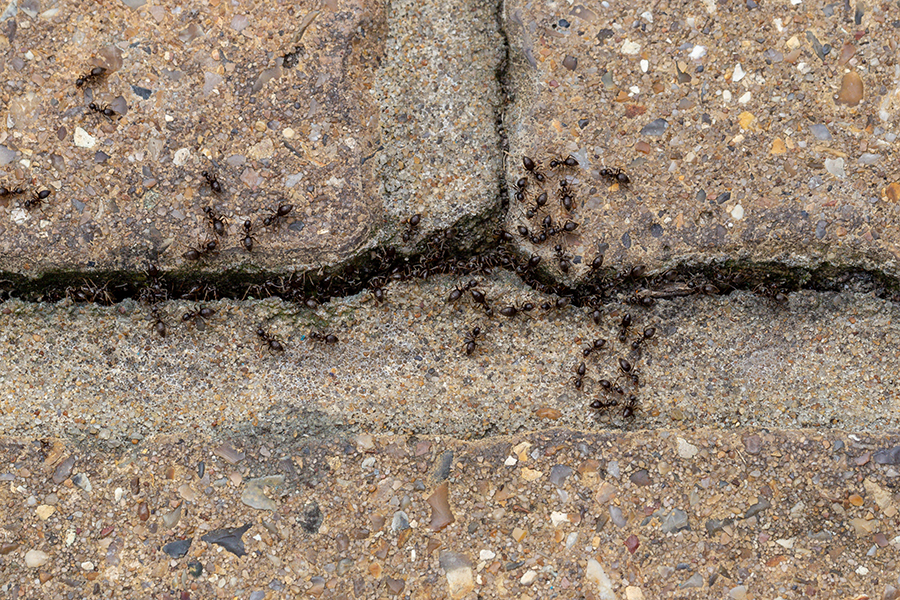
Identify Where The Ants Are Getting In
The first step in dealing with ants is to figure out where they’re coming from. Ants can squeeze through the minutest opening in the wall or foundation, leaving a pheromone trail for other ants to follow. Any crack in concrete, wood, or plaster is an open door. If your foundation has no vapor barrier, they can burrow up inside. Ants are smarter than we realize. Overhead cables, utility lines, and pipes provide handy bridges for them to enter your home through openings in the siding or roofing.
I had a vintage, pull-chain doorbell that I’d installed on the front porch. The ants didn’t bother to ring before marching inside through the chain’s tiny hole in the siding. Doors and windows, even when they’re shut, provide points of entry through small gaps in the frames—especially when there is any rot, as moisture attracts ants. Air-conditioning units in windows are another point of entry. Houseplants, laundry, and furnishings that have been outside may bring in ants, so inspect them thoroughly.
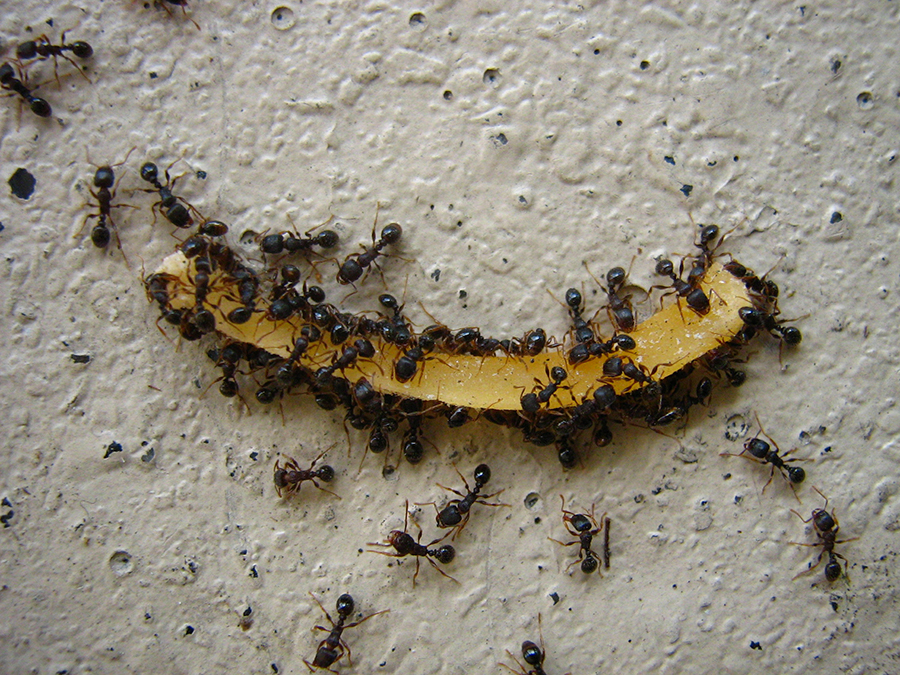
Eliminate What’s Attracting Ants in Your Home
Ants come inside looking for the basics: food, water, and shelter. That’s why they’re seen most frequently in the kitchen, and in areas with poor circulation and standing water: bathrooms, basements, and crawl spaces. It may seem simple to remove them from visible areas, but ants can burrow deep inside walls and floors, building nests that are difficult to find and remove.
The first step is simply to make the house less attractive to ants. Fix foundation problems. Update the seals and caulking around doors, windows, and A/C units. Fix leaky pipes, clogged drains, and dripping faucets. Sweep up crumbs in the kitchen, clean the ovens; don’t leave standing water in the bathroom. If you find ants while cleaning, wipe down surfaces with vinegar to remove their pheromone trail.
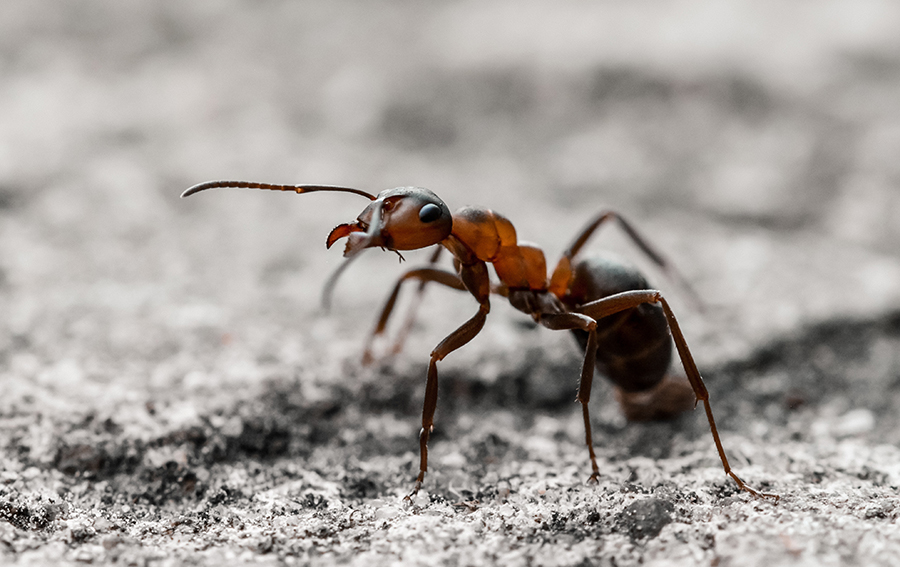
Ant Eradication Methods
The two methods of eradication are repellents, and baits or traps. Repellents deter ants from entering; apply them at doors and windows or other openings. Homemade deterrents include chalk lines, talcum powder, vinegar, coffee grounds, cinnamon, chili pepper, cloves, and cucumbers. Peppermint, lavender, and eucalyptus essential oils also are distasteful to ants. If you already have an infestation, however, the insects usually will find another route! Repellents work best as a preventive measure.
Ant baits are a longer-term solution. The poinsonous bait is taken back to the nest, then consumed by the rest of the colony. Bait is often set in ant traps: small enclosures that the ants can enter and then exit with the bait. You must use the right bait for the right ant species.
Ants may become resistant to one bait, so rotating it every few weeks is helpful. Don’t disrupt the ant trails when using bait, as you want them to carry
it to the nest.
Carpenter ants chew wood, turning it into sawdust that rots. In the forest, this creates compost. In a house, it’s highly destructive. Attracted by moisture, carpenter ants nest in rotted windowsills and exterior walls. Find the nest and destroy it, by removing it and all wet or decayed material, and sometimes using insecticide. Call an exterminator if the extent of the colony isn’t clear. (He may drill holes to puff boric acid into walls.) Managing water incursion is the first step to repelling ants.
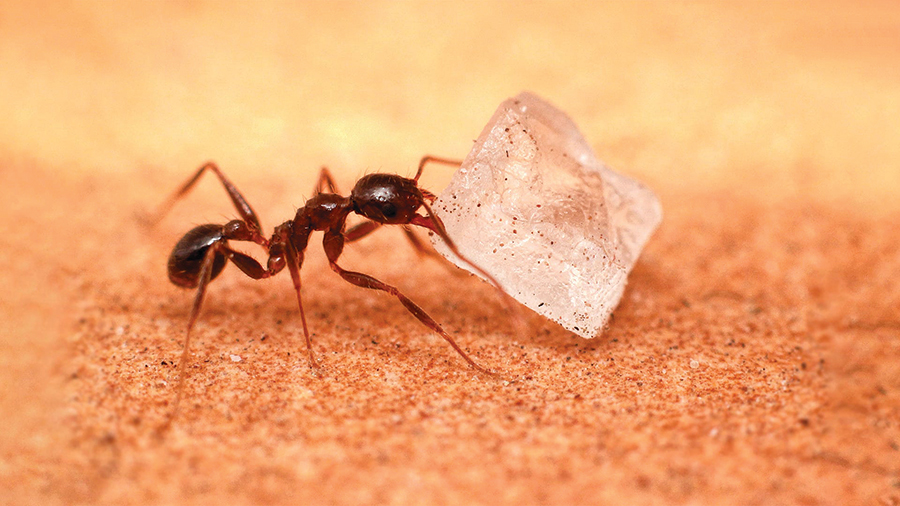
Natural Ways to Get Rid of Ants
Homemade bait can be as effective as manufactured products and save money. Note that borax is a poison, not to be ingested or inhaled; wear a mask and gloves when handling it.
> BORAX + SUGAR
Borax is lethal to ants, disrupting their digestive system, but they won’t eat it alone; it must be mixed with a favorite food.
Mix 1 cup water, 2 tablespoons borax, and 2 cups sugar in a saucepan and boil for three minutes; let cool. The thick, sweet paste is then placed on a plate near infested areas.
> BORAX + PEANUT BUTTER
Some ants prefer fat and protein over sugar. If sugar didn’t work, try this:
Mix 2 tablespoons borax with enough peanut butter to make a thick paste, and leave it on a plate near ants.
> DISH SOAP + OIL
Either spray the solution on the ants, or leave it in bowl: the ants are attracted to the oil and soap, but when they try to drink they are trapped and drown.
Mix 1 quart water, 1 teaspoon cooking oil, and 1 teaspoon dish soap.
> BAKING SODA + POWDERED SUGAR
Baking soda disrupts the digestive system of ants, slowly killing them. Add powdered sugar to make it palatable, and they’ll take the bait back to the colony.
Mix equal parts soda and sugar and place it in a shallow dish near the ants.







